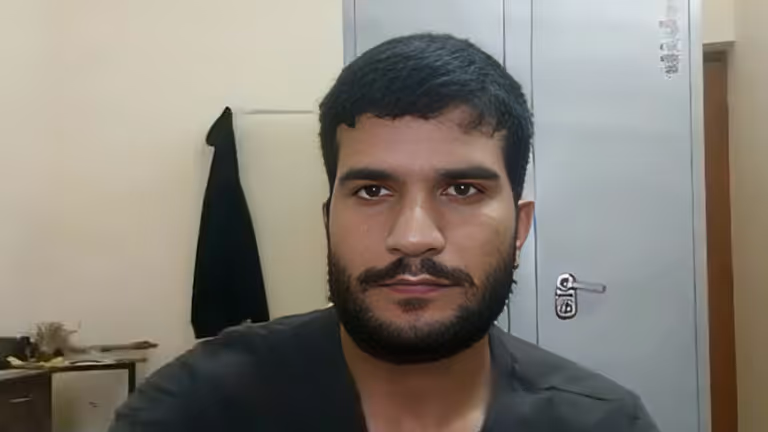Delhi Blast: Advocacy of terrorism… speech in English, video of terrorist Umar before the blast surfaced
** A newly surfaced video of Dr. Omar Mohammed Nabi, the prime suspect in the November 10 Delhi blast near the Red Fort, has raised serious concerns among security agencies. In the video, Omar—speaking in clear English—appears alone in a room, delivering a speech in which he attempts to justify suicide bombings, describing them as “misunderstood” and referring to them as so-called “martyrdom missions.”
Omar’s Controversial Remarks on Suicide Attacks
In the video, Omar argues that the concept of suicide attacks is misinterpreted, claiming many “contradictions and arguments” surround the idea. He states that what is often labeled a suicide bombing is, according to him, a “martyrdom mission,” and suggests that individuals who undertake such acts believe their time and place of death are predetermined.
Omar further states that “no one knows when or where they will die,” adding, “Don’t be afraid of death.” His calm demeanor and articulate English accent in the video have alarmed investigators, who say it reflects a highly radicalized mindset and represents a “new, educated face of extremism.”
According to investigative sources, the video reinforces the belief that the deadly car explosion near the Red Fort was not an accident but part of a meticulously planned conspiracy. Fourteen people were killed and over 20 seriously injured in the November 10 blast.
During the investigation, police retrieved extensive mobile tower dump data from Sunhari Bagh parking lot—where Omar’s car was parked for over three hours—and from the blast site. Sources report that 187 mobile phones were active within a 30-meter radius during that period.
Shockingly, 912 mobile phones were active in the vicinity five minutes before and after the explosion. Comparing digital location histories, investigators identified 68 mobile numbers that were active at both locations simultaneously.
Initial analysis indicates that several of these 68 suspicious numbers received calls from Pakistan and Turkey. Investigators say many of these phones were linked to a single foreign server that appeared to switch between IP clusters in both countries, suggesting the use of proxy or spoofed networks.
Two phones detected at the blast site showed minute-to-minute location shifts, further hinting at spoofing and high-level technical sophistication.
Security agencies are now mapping each phone’s connection to foreign IP addresses in the minutes leading up to the blast. Special surveillance has been activated on cross-border calls, foreign-routed internet traffic, and suspicious device activity.
With the emergence of Omar’s video and the growing list of digital clues, investigators say the blast appears to be part of a wider conspiracy involving foreign operatives and advanced technical coordination. The case is now considered one of the most complex counter-terror investigations in recent years.
Security agencies are expected to tighten surveillance strategies as they probe deeper into the network that may have supported the attack.
ALSO READ: Benefits and Risks of Wearing a Hat While Sleeping





